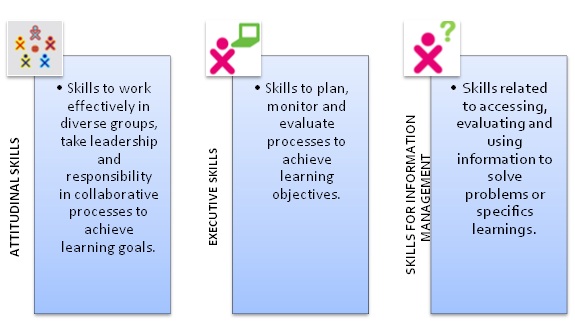
With the image of the "Tree of Life" or Kaliwirinae in language of ethnic Sikuani, we wanted to represent the project EDÜCATE, which has as its slogan: "Education and technology for strengthening culture", is possible by public-private partnership between BHP Billiton Company, Colombia government through the its program "Red Unidos" and One Laptop per Child Association, which have the objective of contribute to strengthening the quality of education in 11 schools of rural and indigenous communities on Vichada Department, Colombia, this area has been recovering from internal armed conflict.
What makes this project remarkable?
- It is the first time in Colombia that a Model 1 to 1 with indigenous communities has been implementing for culture recovery and strengthening of Sikuani ethnic group located in this area.
- It complements the delivery of technology with training on autonomous learning skills in order to contribute to the sustainability of the project objectives and increase the social impact in the long term.
- The project is part of a research which inquires about the social impact of technology on the development of autonomous learning skills
Which are the main objectives?
- To contribute to strengthening the quality of education in 11 schools of rural and indigenous communities in Vichada, Colombia, an area that has been recovering from armed conflict.
- To develop learning skills in students through the use of technology, improving their ability to learn how to learn.
- To contribute to strengthening the culture through the recovery of cultural material to generate contents and software activities for the laptop XO.
- To offer training for technical and administrative management of the project.
Who are the beneficiaries?

Charging via a solar panel
11 schools, 930 indigenous and rural students, 30 teachers and directors from elementary schools. This schools can be classified into 3 groups:
- Indigenous Schools: in one classroom there are students from 1º to 5º grade of primary school and their teachers and students belong to ethnic Sikuani. There, the XO work with solar panels.
- Small Mixed Schools: small schools with a course for each grade from 1º to 5º, some courses are integrated into a single classroom, their population is rural and indigenous and the students are internal and external.
- Mixed Large schools: large schools with more than one course by grade, in each classroom they have approximately 40 indigenous and rural students. Of this type, there is only one school in the region.
Which are the key points of autonomous learning skills in the Model 1 to 1 implementation?

Which are the achievements of the early stage?
- School's server installation and configuration.
- Teacher's trainee on the use of the XO laptop and its pedagogical possibilities.
- Launch of "Clubes Sabedores XO", a complementary strategy for learning and development projects.
- Sense of belonging towards the project. Now the actors recognize it as a key point for the transformation of their educational reality.
How is the research designed in order to measure the social impact of the project?
An experimental research will be conducted through the use of mixed methods which will provide quantitative and qualitative results regarding the impact of the EDÜCATE project. Two measurements will be taken, before and after introducing the technological variable in the beneficiary population and the data analysis will be based on the statistical differences method. Educational settings will be evaluated in four dimensions (Directive, Pedagogical, Technological and Communitarian) and through four main actors (Directors, Teachers, Students, Community Members).
Which are the main results of the baseline research?
Directive dimension
- In general, schools have weak relationships with private and public companies in the region that depend on specific projects and interests, with uncertain results.
- On average, students are satisfied by attending schools.
- Schools perform extracurricular activities, but there is no continuity, backup for resources or incentives for participation.
- Most of the directors and teachers identify conflicts over the use of technological resources but they do not have effective tools to solve them.
Pedagogical dimension
- In general, the actors develop collaborative learning activities and they are able to elaborate plans that guide the research, analysis and synthesis of relevant information to answer their questions.
- Teachers identify students with learning difficulties but they don't have additional activities to help the students.
Technical dimension
- Evaluated schools do not have the infrastructure in technological resources that they need.
- The average number of computers per student is 0.023 and the lack of electricity makes more difficult the current processes.
- As for skills, on average the actors are not able to manage the basic operation of software, they consult with others to address concerns about activities with technology resources and don´t use it daily in the learning process.
Communitarian dimension
- Although most recognize the existence of some tools for teaching Sikuani culture (dictionaries, for example), they are not used frequently in classrooms.
- On average, there is no formal presence of cultural patterns of language, customs and traditions in educational projects.
Sandra Barragán is One Laptop per Child OLPC Association's Country Manager for Colombia. She blogs at http://olpcvichada.blogspot.com, tweets as @ColombiaOLPC and can be reached at sandra@laptop.org.

